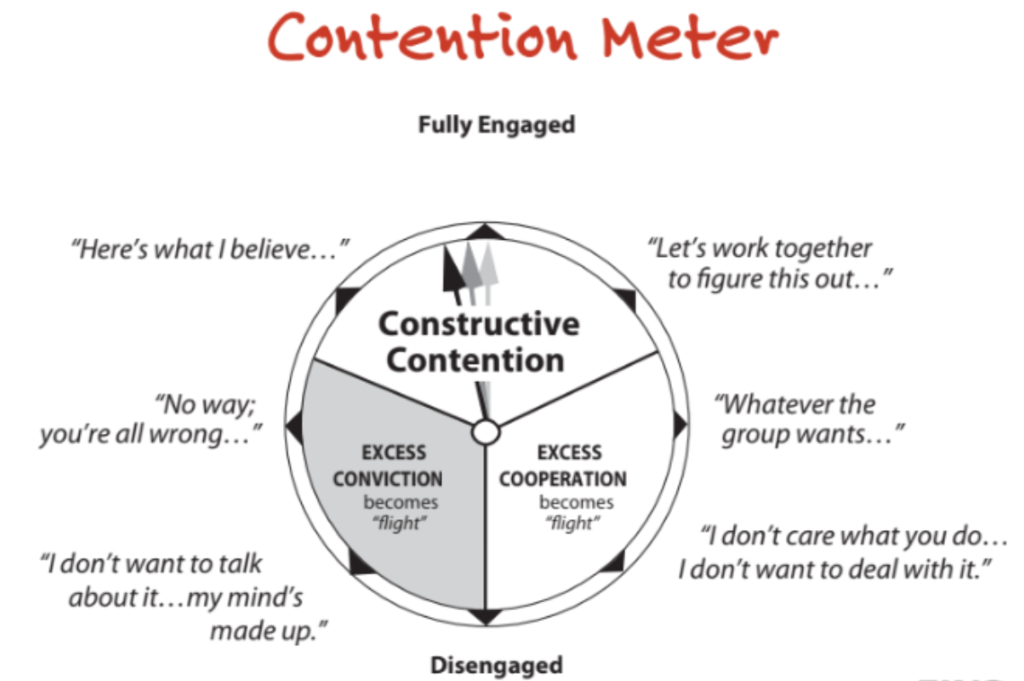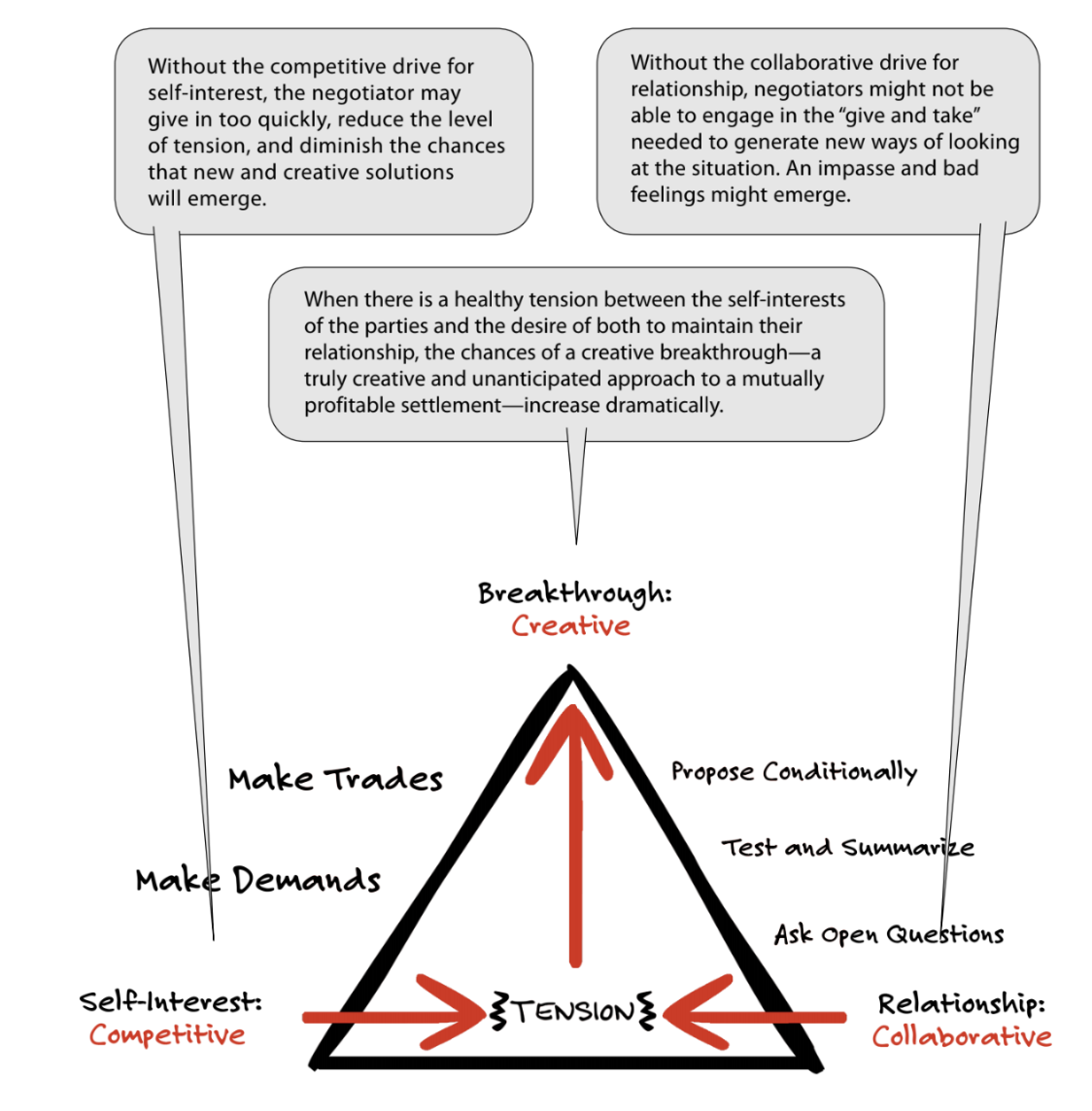What comes to your mind when you hear the word “contention”?
For most people, contention conjures up unpleasant or stressful feelings.
Whenever we hear anything that makes us think about or feel discord, strife, conflict, and contention, the untrained presupposition is to prepare for battle. It’s us versus them, and we need to win this battle.
In negotiations, however, cool heads tend to prevail. When we look at high performing negotiators, not only are they comfortable with contention– they typically thrive in it.

The Contention Meter is an excellent concept to master the art of working with tension. The goal is to keep the other party fully engaged in constructive contention, and away from any excess conviction or excess cooperation.
The Three Dimensions of Negotiation
The best way to think about the Contention Meter is within the scope of the Three Dimensions of Negotiation. You may have seen this concept in a few of our other articles, but it’s worth going over again.

The Three Dimension Negotiation Triangle
The Three Dimensions of Negotiation are Creative, Competitive, and Collaborative, and combined, they all focus on keeping a productive momentum, protecting your interests, and paving the way for a creative win-win solution to appear and help close your deal.
The savviest negotiators are able to masterfully orchestrate the negotiation by utilizing the various behaviors associated with each dimension.
Contention Born from Competition
The Competitive Dimension focuses on your self-interest and that of the party you are representing. This means protecting your desires and looking out for yourself, which often requires staying firm on certain positions. Sometimes, the competitive dimension requires us to play hardball. The extreme of the Competitive Dimension is to create a “win-lose” situation where your gains come at the expense of the other party.
This dimension usually focuses on single or a small set of negotiables, like delivery terms or costs.
Solely using competitive behaviors might win a few negotiations, but it ultimately neglects the creation of potential long-term relationships with the other parties. Additionally, if the other party views you as solely making demands and not giving anything in return, they may reciprocate with similar counterproductive behavior.
The competitive dimension helps communicate what you want out of a deal and helps uncover where the other party stands on giving those things up, as well as what they want.
When thinking of the contention meter, the competitive dimension essentially winds it up. It needs a certain amount of winding to keep it going, but too much winding will jam it, leading to a “flight” away from a potential deal.
On one hand, it creates energy between both parties that facilitates the communication of what they want.
On the other hand, competition can wear people out. It’s much easier to hit a wall when both parties are stuck in a persistent tug-of-war of demands with no clear end in sight.
Nursing Contention with Collaboration
The Collaborative Dimension is all about facilitating communication to form a productive relationship. The goal is to give in order to get, hopefully paving the way for a mutually satisfactory outcome for the negotiation.
The extreme of the collaborative dimension means sacrificing whatever you can, often to your disadvantage, to close a deal. When executed correctly, it can open up the playing field for all parties.
The collaborative dimension is a softener to the sharper elements of the competitive dimension. Without collaboration, your negotiation could quickly hit a rocky impasse before disintegrating.
Being collaborative is great, but here’s the rub: you probably have a very limited amount of negotiables on your side so you must use them strategically. Most negotiables you give away come at a cost, and it’s important you calculate which you can afford to give in order to keep the conversation going.
The Collaborative Dimension aims to push the Contention Meter into full engagement and as close to a “let’s work together to figure this out” atmosphere as possible. Too much collaboration could lead you towards excess cooperation, which can quickly devolve into apathy and a “flight” away from closing the deal.
Final Thoughts – Tension and Contention
The Creative Dimension is where wonderful things happen and mutually beneficial decisions are born. However, in order to get there, it’s often required to embrace the tension created by the Competitive and Collaborative dimensions pulling on each other.
If we were to zoom in on “tension,” we’d almost be able to look at the Contention Meter as a compass of how to steer that tension into something creative. There is no single blueprint for guiding a strategy to its True North constructive tension, but you should steer the conversation away from the Excess Conviction quadrant as much as possible.
Once you feel the constructive contention, and some expert negotiators can describe this feeling as almost palpable, then you know you’re working at the correct temperature to give room for a creative breakthrough.



